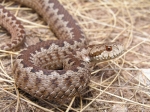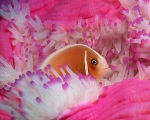Spinach power
Molecular biologists are using spinach to make vaccines against anthrax, influenza, even plague. The scientists achieved this by tricking the vegetable into producing harmless bits and pieces of common human pathogens that cause flu and plague. When these chopped-up deactivated pathogens are injected into mammals, the animals acquire immunity.
Snake venom helps in heart treatment
Indian health scientists looking for cheap medicines for heart ailments say chemical compounds in snake venom could be of help. Research by scientist shows that limited use of the non-protein compounds found in the venom of snakes such as king cobra could help patients with irregular heartbeats. There are trials carried out on rats and guinea pigs, which have given encouraging results.
Why there is no ‘heart cancer’?
Any cell in the body has the potential to become malignant, thus cancer can, in fact, affect the heart. Cancer arises from mutations in the DNA of a ce3ll. Usually a cancerous cell undergoes several mutations before it becomes a deadly, invasive cancer. Most of these mutations occur when the cell is dividing and replicating its DNA. The only way for a cell to propagate a mutation is to divide and pass those mutations on to its daughter cells. With regard to the heart cells, however, they just go right on pumping and doing their job and don’t replicate to make new heart cells unless there has been some injury. With so little chance for mutations to occur and get passed on to daughter cells.
In cancers that are most common-breast , colon and skin among others. Most of the cells in these tissues are replacing themselves all the time. Breast tissue is constantly affected by hormones and is always growing and shrinking. The lining of the colon is continually sloughing off and being replaced. The same is true of the skin. In addition, skin and colon cells are constantly being exposed to things that induce mutations- ultraviolet rays for the skin and carcinogens in food for the colon. As a result, the likelihood of mutations on to daughter cells during cell division. This is why these types of cancer are common. The heart , in contract, doesn’t get exposed to many carcinogens, just those in the blood. That , combined with the fact that the heart cells do not often replicate, is why you don’t see much cancer of the heart muscle. Indeed, accordingly to cancer statistics, it does not appear to occur at any measurable rate.
Bacteria in yogurt can battle AIDS
“Friendly bacteria” found in yoghurt has been genetically modified by researchers in the US to produce a drug that blocks HIV infection. This technique could provide a cheaper and more effective way of delivering drugs to fight the spread of AIDS.
Healing with colours
Colour therapy is a holistic and non-invasive therapy , a growing area in alternative medicine. It aims to balance and enhance our body’s energy centers (chakras) by using seven colours of light spectrum, which can help to stimulate our body’s own healing process. Each of the seven colours resonates with one of the main chakras.
The main colours that effect us are the rainbow hues of the spectrum – red, magenta, orange, yellow, green , turquoise, indigo and violet. The first four are the thought to bethe most stimulating colours, the last four are more comforting and soothing.
RED: stimulating and warming. Good for treating low pressure agoraphobia (fear of being in places where help might not be available, typically fear of crowds, bridges or being outside one, cold and paralysis.
Majenta: protective colour that treats ailments related to the head. Migraine ,nausea, shock,stroke and tiredness can all benefit.
Orange: stimulate the digestive system. Good for treating reduced appetite, gallstones, liver problems, constipation, indigestion and muscle stiffness.
Green: treats the heart and lungs. Good for bronchitis, emphysema, heart burn, heart diseases, emotional fatigue.
Pale blue: anti inflammatory. Treats the skin and boosts the immune system used for eczema, dermatitis, fever, haemorrhoids and stings says. The daily mail, Uk
Indigo: works on the throat, also anti inflammatory. Used for asthma, burns, cramps, laryngitis, sinusitis, tonsillitis and anxiety attacks.
Violet : helps to rebalance hormonal system and treat nervous disorders. Good for menopause, neuralgia, varicose veins, tinnitus ( continuous ringing in the ears and noises in the head).

![biosphere_centre_500_11578[1][1]](https://dreamangelflorals.files.wordpress.com/2010/12/biosphere_centre_500_1157811.jpg?w=640)









You must be logged in to post a comment.